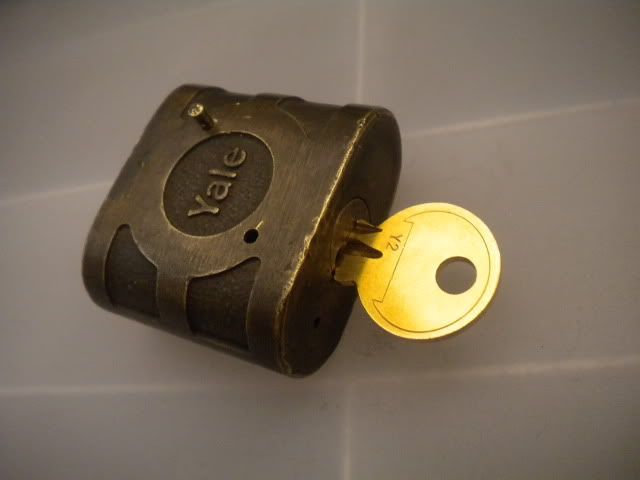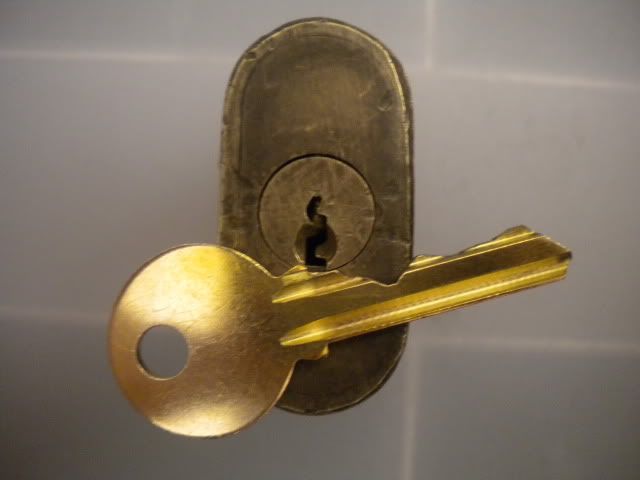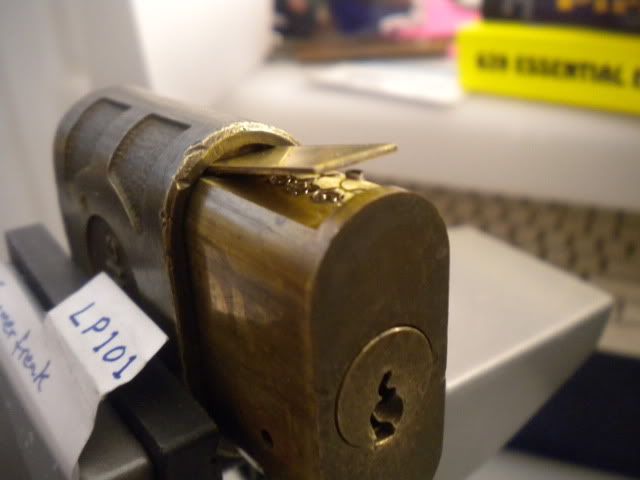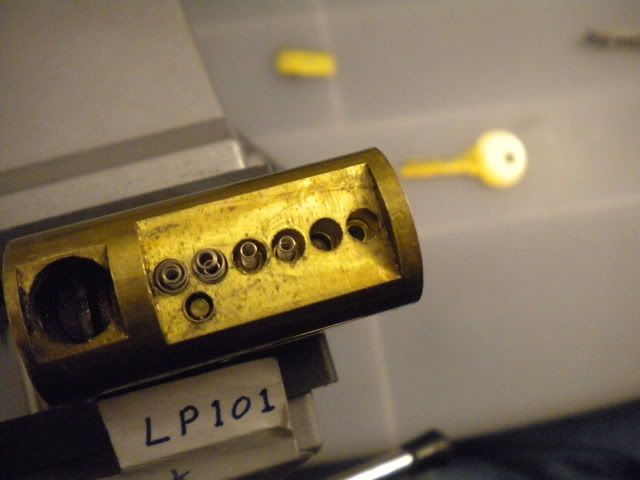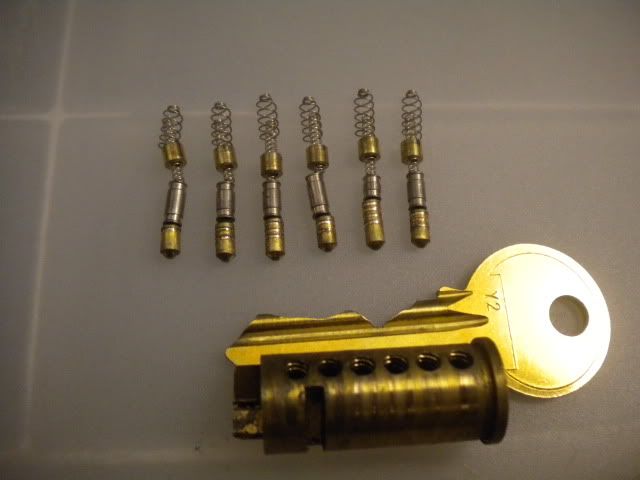jwhou wrote:I take it that your idea of anti-bump pins are those top driver pins drilled out and with a spring inserted. Are these internal springs then connected to those spool/serrated pins underneath them?
If I am understanding your question correctly. Yes, the internal spring pushes down on the bottom driver.
jwhou wrote:How to you deal with their now being a shear line between the hollowed out driver pin and the spool pin as well as between the spool pin and the bottom pin?
The top driver pin never crosses the shear line. Only the bottom driver does. Furthermore, when all the pins are fully at rest the top driver pin isn't touching the bottom driver. The larger diameter hole isn't drilled all the way through the housing. The fact that they aren't touching is what makes the anti-bump work. When you hit the bottom pin it transfers motion to all the bottom drivers, then they fly up and hit the top driver pin, again transferring motion. The bottom driver never crosses the shear line during any of this.
jwhou wrote:Wouldn't a better anti-bump pin be a pin in pin design where the internal pin is sprung to the outer pin but does not normally protrude out the bottom unless the outer pin suddenly moves up and the lagging inner pin then telescopes out obstructing the shear line.
In my tests, anytime all of the pins are resting together (touching). They can be bumped/pick gunned. That design hasn't proven itself to me like this current design has.
jwhou wrote:How about a bottom pin which is really a inner pin with a full diameter bottom section sprung to the hollowed out top cylinder of the pin such that any kinetic energy passes to the center pin which rises inside a hollowed out top driver pin thereby not imparting any kinetic energy to the top pin?
This would probably work. I'll keep this in mind. I'm not sure if I will be using it anytime soon as I really like the way my current design is working. But if I was modding a cylinder that had very small bible, this may be the way to go. Without resorting to Masters bump stop setup.
Evan wrote:How did you cut that key
I cut it on an ITL9700 and turned on the "laser cut" option. The laser cut option cuts straight from one cut to the next without leaving the peaks between each cut. Considering the extra springs in the lock, I did this just to make it work smoother
Eyes_Only wrote:Awesome set up.

I'm starting to do a similar thing with a lot of my locks too (threading the pin chambers and installing serrated drivers), but I've held off of doing that to all my locks cos I don't want to end up with a large part of my practice lock collection to be something thats way too difficult to pick.
That's good to hear, and yeah it makes those serrated drivers something to really be afraid of.
